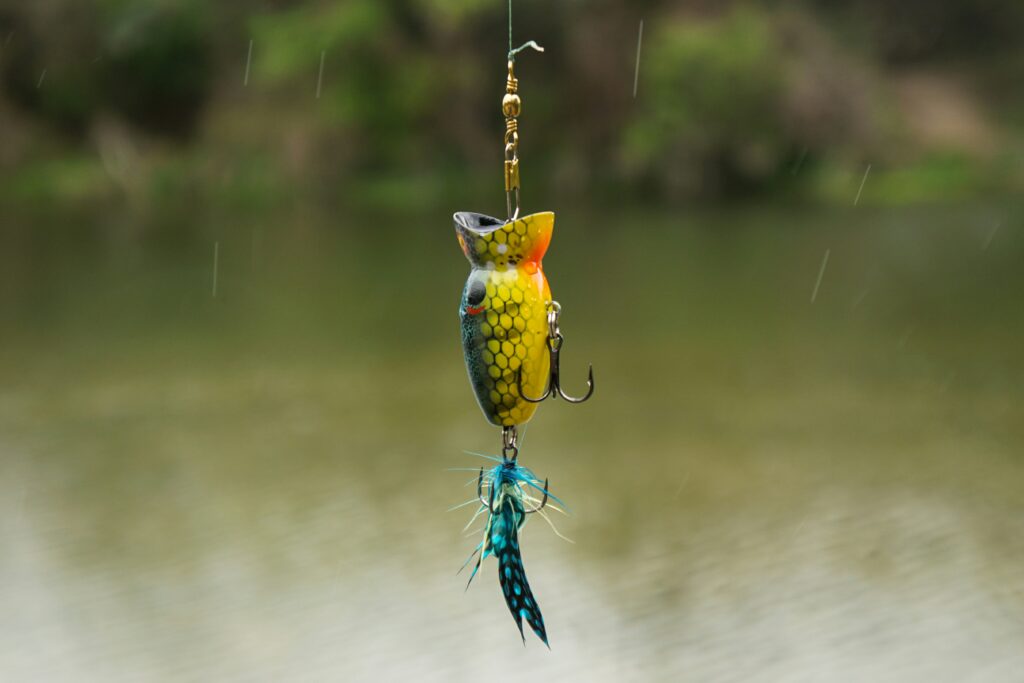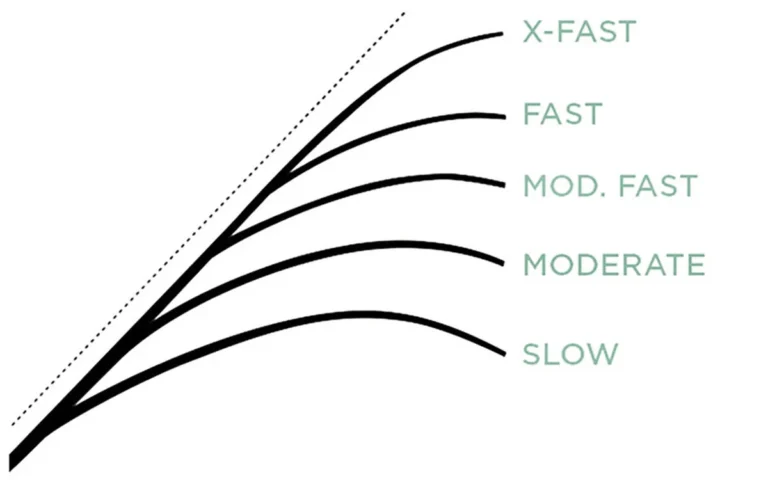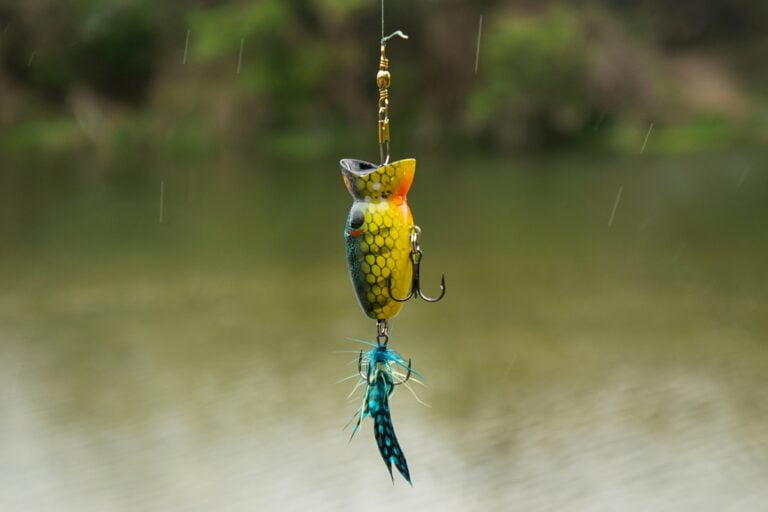Types Of Fishing Lures And How To Use Them 2024 Guide

Unraveling the Lure Labyrinth: A Guide to Fishing Lures and Their Tactics
The attraction of fishing is straightforward, but choosing the right bait can be like navigating a bewildering labyrinth.
Fear no longer exists now, fellow anglers! This comprehensive manual unravels the mysteries of fishing lures, equipping you with the expertise and abilities to triumph over any body of water.
Types Of Fishing Lures And How To Use Them: The Ultimate Guide 2024
Let’s dive into the charming world of fishing lures. Anglers use diverse sorts of lures to trap fish, and each has its own personal, precise traits. Here are a few now not-unusual styles of lures and their respective packages:
Jigs
Jigs are flexible and effective for diverse species.
They encompass a gentle plastic-protected weight that sinks realistically when used along with your rod.
Use a forestall-and-move approach to mimic herbal prey motion.
Suitable for both shallow and deep water.
Chatterbaits
A mixture of vibrating spoon heads and jig bodies.
Work them slowly, heading off speedy moves.
Popping or hopping techniques create sound and entice fish attention.
Great for bass fishing.
Crankbaits
Hard plastic lures with a diving lip.
Cast them out and retrieve them, mimicking injured fish.
Ideal for protecting large areas and targeting various depths.
Jerkbaits
Long, narrow lures that imitate injured baitfish.
Twitch your rod to create erratic movements.
Effective for bass, pike, and walleye.
Spinnerbaits
Metal blades spin as you retrieve.
Cast near cowls (weeds, rocks) and reel steadily.
Attracts bass, pike, and muskie.
Topwater Lures
Float on the water floor.
Pop, walk, or buzz them to create commotion.
Exciting moves from bass, trout, and extra.
Soft Plastic Baits:
Worms, creature baits, and swimbaits fall under this category.
Rig them with hooks and paint them slowly.
It is flexible for numerous species.
Remember, experimenting with exceptional lures and techniques is part of the fun! Tight traces! 🎣
Part 1: Diving into the Lure Diversity
Which lure is most effective?
The worldwide marketplace for lures is big, with every type supplying outstanding advantages and specializing in unique fish behaviors. Buckle up as we find out the essential categories:
Spoons:These conventional metallic lures shimmer like injured baitfish, attracting predatory species with their wobbling motion.
Trolling: Attach a spoon to your line and allow it to dance inside the back of your boat. This is ideal for covering large areas and searching for energetic fish.
Casting and retrieving:Cast your spoon, then permit it to sink before retrieving with a regular or jerking movement, mimicking a fleeing baitfish.
Jigs: Weighed lures with hooks, jigs are available in diverse patterns and sizes, targeted at unique depths and fish alternatives.
Jigging:Lower your jig to the desired intensity, then increase and lower it with sharp snaps or gentle flutters for appealing bottom-residing fish.
Swimbaits:Soft plastic jigs with sensible appendages, these swim enticingly through the water, mimicking stay bait. Use a sluggish, ordinary retrieve or upload jerks for a wounded baitfish impact.
Crankbaits:Hard-bodied lures with a built-in lip, crankbaits dive and wobble while retrieved, developing vibrations that trap fish.
Shallow Cranks:Designed to run close to the floor, those are great for defensive weed beds or rocky shorelines in which ambush predators lurk.
Deep Cranks: dive deeper to target fish suspended inside the water column. Use a normal retrieve or add pauses and jerks for a more erratic movement.
Topwater Lures:Designed to go with the flow and create commotion on the floor, these lures lure aggressive fish with their visible and sound cues.
Poppers:These create a popping sound at the same time as being retrieved, mimicking feeding baitfish. Use a jerky retrieve with pauses to allow the entice to sit and trap moves.
Walking Baits:Zigzag across the water surface, mimicking fleeing baitfish or insects. Use a slow, consistent walk with occasional twitches to introduce realism.
Soft Plastics:Made from bendy materials, the lures offer unmatched versatility, mimicking diverse prey like worms, grubs, or maybe frogs.
Texas-Rig: Weedless and bendy, this rig functions as a soft plastic malicious program or lizard threaded onto a weighted hook. Drag it alongside the lowest or hop it off the lowest for a crawling motion.
Drop-Shot:A finesse rig with a mild weight and smooth plastic bait suspended below. Ideal for focused on finicky fish in clear water, use a sluggish, shaking retrieve.
Part 2: Mastering the Lure Language
Now that you realize the types, let’s delve into the art’s efficacious usage:
Match the lure to the fish. Research the target species and their desired prey. Choose lures that resemble their meals in duration, form, and color.
Consider the water conditions: visibility, water temperature, and modern technology all have an impact on fish behavior. Choose lures that create the proper vibration, sound, and movement for the scenario.
Experiment with retrieval techniques: Don’t be afraid to vary your retrieval pace, jerking motions, and pauses. Observe the water and look ahead to fish reactions to adjust your approach.
Learn from Local Experts: Seek pointers from skilled anglers or fishing guides acquainted with your intended water body. They can offer valuable insights on effective lure selections and techniques.
Embrace the Learning Curve: Mastering fishing takes time and exercise. Be patient, test, and no longer get discouraged with the aid of setbacks. The rewards of a hit capture are nicely worth the try.
Part 3: Beyond the Basics
Remember, this is simply the top of the iceberg! As you delve deeper into the sector of fishing, you may find out even more specialized lures and techniques to target precise fish species and situations.
Fly fishing is a completely unique form of angling with feather-based total lures referred to as flies. Requires specialized devices and casting strategies.
Ice fishing makes use of specialized lures designed for fishing through the ice regularly that specialize in jigging and tip-ups.
Saltwater Fishing: This calls for lures designed to face up to the rigors of saltwater and target particular marine species.
Remember: Responsible fishing practices are crucial for preserving our aquatic ecosystems. Always observe neighborhood guidelines, exercise capture-and-release whenever suitable, and remove used fishing line responsibly.
With this know-how and willpower, you are well on your way to conquering the trap labyrinth and unlocking the secrets and strategies.
Bass Fishing Lures And When To Use Them

Unveiling the Bass Buffet A Guide to Bass Fishing Lures and When to Use Them
The thrill of a bass tugging at your line is unrivaled. But with a big array of lures seemingly designed to confuse even the most pro-angler, selecting the right one may feel like deciphering an alien language.
Worry not, bass masters and aspiring bards alike! This entire manual delves into the arena of bass fishing lures, equipping you with the statistics to unlock their secrets and fill your livewell with envy-inducing catches.
Bass Fishing Lures And When To Use Them: A Comprehensive Guide
Part 1: The Luring Lineup
First, permit’s discover the diverse sort of lures bass discover impossible to resist:
1. Topwater lures: These create commotion on the floor, triggering aggressive strikes with their visible and sound cues.
Poppers: Mimic feeding baitfish with a popping sound all through retrieval. Use a jerky retrieve with pauses to lure moves.

Walking Baits: Zigzag across the water, corresponding to fleeing prey. Use a gradual, regular stroll with occasional twitches for delivered realism.
Frogs: Designed to imitate real frogs, appealing bass lurk in shallow cowls. Use a gradual, popping retrieve with pauses to imitate a struggling amphibian.
2. Crankbaits: Hard-bodied lures with an incorporated lip, crankbaits dive and wobble when retrieved, developing vibrations that trap fish.
Shallow Cranks: Run near the floor, best for masking weed beds or rocky seashores. Choose remarkable colors for stained water and natural colorings for clean water.
Medium-Diving Cranks: Dive deeper, focused on fish suspended mid-water. Use a constant retrieve or add jerks for an erratic movement.
Deep Cranks: Reach depths wherein big bass lurk. Choose heavy lures to solid far and sink short.
3. Jigs: weighted lures with hooks, jigs are available in various styles and sizes, centered on specific depths, and attract bass with their attractive motion.
Flipping Jigs: Weedless and compact, ideal for skipping beneath docks and flipping into thick cowls. Choose heavy weights for deeper penetration.
Swimbaits: Soft plastic jigs with practical appendages, these swim enticingly through the water, mimicking live bait. Use a sluggish, consistent retrieve or upload twitches for a wounded baitfish effect.
Football Jigs: Round-headed jigs are best for dragging alongside the bottom or hopping off structures. Choose trailers like creature baits or grubs for his or her attraction.
4. Soft Plastics: Made from bendy substances, those lures provide unequalled versatility, mimicking numerous prey like worms, grubs, or even lizards.
Texas Rig: Weedless and flexible, this rig features a mild plastic trojan horse or lizard threaded onto a weighted hook. Drag it alongside the bottom or hop it off the bottom for a crawling motion.
Carolina Rig: Features a weight determined with the useful resource of a leader and clean plastic bait. Ideal for masking huge regions and dragging along the bottom. Adjust the leader period to target precise depths.
Drop-Shot: A finesse rig with a slight weight and smooth plastic bait suspended below. Perfect for concentrated finicky bass in clean water, use a sluggish, shaking retrieve.
5. Spoons: These conventional metal lures shimmer like injured baitfish, attracting predatory bass with their wobbling movement.
Inline Spinners: Feature a spinning blade that creates flash and vibration. Cast and retrieve with a consistent or jerking movement.
Flutter Spoons: Flutter and wobble erratically sooner or later of retrieval, mimicking a suffering baitfish. Ideal for fishing in cutting-edge-day or windy situations.
Part 2: Matching the Lure to the Moment
Now that you understand the gamers, let’s learn how to orchestrate the right bass-catching performance:
1. Consider the Season: Bass behavior adjustments will occur at some unspecified time in the future. In spring, they’re shallow and aggressive, favoring topwater lures and crankbaits.
In the summer season, they are attempting to find deeper, cooler water, responding nicely to jigs and tender plastics. In the autumn, they feed more carefully in advance than in the winter, making them at risk of gradual-moving baits like Carolina rigs.
2. Read the Water: Water readability, depth, and cowl all affect bass region and feeding conduct. Choose lures that run at the appropriate intensity and create vibrations or movements suitable for the water’s readability.
3. Target Specific Structures: Bass like to ambush prey near rocks, docks, weed beds, and different structures. Use lures that would navigate these areas efficiently, together with flipping jigs for docks or Texas-rigs for weed beds.
4. Experiment and Adapt: Don’t be afraid to strive for distinct lures and retrieve strategies. Observe the water and look beforehand for bass reactions to modify your method. Sometimes, the most unexpected trap can trigger a strike.






